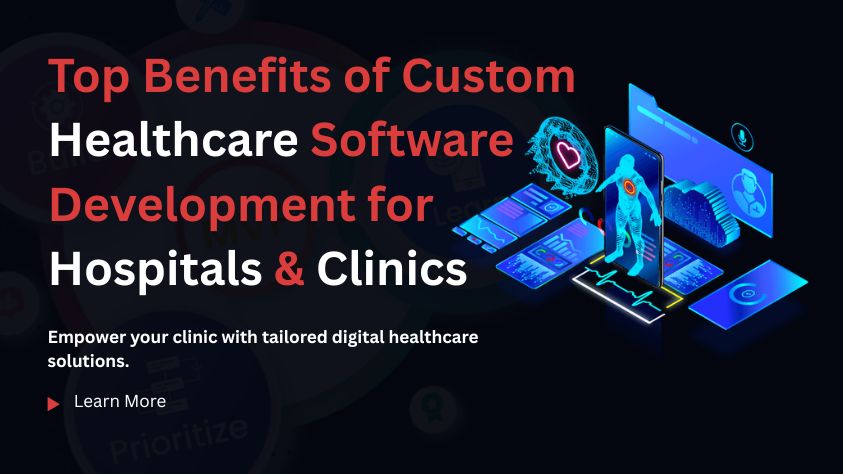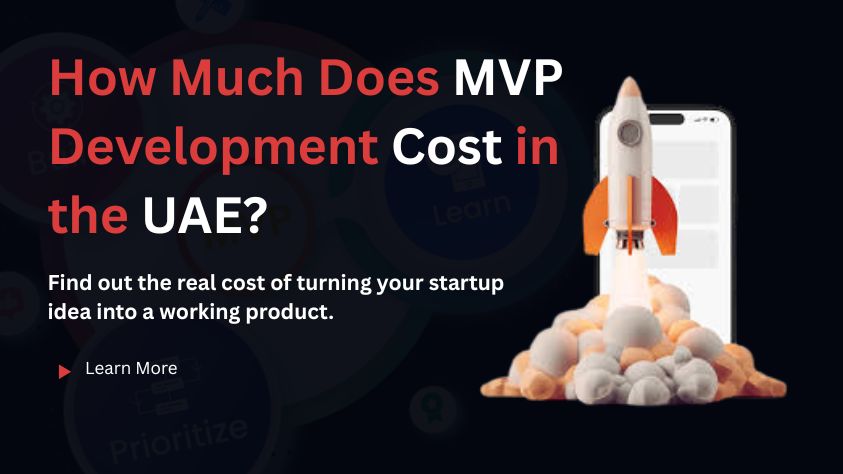Starting a new product can be exciting but also overwhelming. You might have a great idea, but building a full product right away can be risky and expensive. That is where an MVP, or Minimum Viable Product, comes in, it helps you test your idea quickly and efficiently. In this article, you will learn what an MVP is, why it is important, the types of MVPs, a step-by-step process to develop one, and tips to make your MVP even more successful.
What Is MVP?
In the field of MVP in software development, the term stands for Minimum Viable Product. It refers to the earliest usable version of a software product that contains only the essential features required to address the primary problem of its intended users. Instead of investing time and resources into a fully developed system from the start, an MVP allows startups to validate their concept with minimal effort and cost.
The MVP software development meaning is not just about reducing scope; it is about building strategically. This process helps reduce risks, prevents unnecessary expenses, and provides a practical foundation for scaling in future stages.
Why Is Developing an MVP Important?
Developing an MVP is essential because it provides startups with a clear direction at the earliest stage of product development. It ensures that the focus remains on solving the right problem rather than building unnecessary features too soon. Without an MVP, there is a higher chance of investing time, effort, and money into something that may not align with actual market needs.
An MVP also plays a crucial role in shaping the evolution of a product. It sets the foundation for decision-making by showing whether the original idea is strong enough to move forward. In this way, startups are not building blindly; they are working with evidence and clarity from the very beginning. Partnering with a professional MVP development company can provide the necessary expertise to ensure that the MVP process is carried out efficiently and effectively, helping you move forward with confidence.
Types of MVP
MVPs are generally divided into two main categories: low-fidelity MVPs and high-fidelity MVPs. Each type serves the same purpose, testing an idea, but they differ in terms of detail and functionality.
Low Fidelity MVP
A low-fidelity MVP is the simplest way to present your idea without incurring significant development costs. It usually includes sketches, wireframes, landing pages, demo videos, or even a basic clickable prototype. This type is helpful in the very early stage when you want quick feedback before committing resources.
High Fidelity MVP
A high-fidelity MVP is more advanced and closely resembles the actual product. It includes a functioning prototype or an early version of the software with limited but usable features. This type allows users to directly interact with the product and provide insights on real performance, usability, and overall experience. These are ideal when the concept has already been validated, and it is time to see how it works in practice.
Step-by-Step Process to Develop an MVP For Startups
Developing an MVP may seem challenging at first, but breaking it down into clear steps makes it much easier. By following a structured approach, startups can move from idea to a working product efficiently, while learning and improving along the way.
Here si a simple process of developing an MVP for startups;
Identify the Problem
Every MVP development process begins with clearly identifying the problem to solve. The startup defines who faces the issue, why it matters, and what the current alternatives are. This clarity ensures the MVP build stays focused on solving a real pain point instead of adding unnecessary features.
Validate Market Demand
Before moving ahead, it is essential to test whether the market truly needs the idea. This stage of MVP in software development involves quick experiments such as landing pages, ad tests, or small surveys. These methods help confirm if users are interested enough to try the solution once the MVP is launched.
Prioritize Core Features
A successful MVP app development project includes only the must-have features. The startup lists all possible functions but keeps only those that directly address the main problem. By focusing on essentials, the MVP development system remains lean, efficient, and testable.
Choose Development Approach
The team decides how the MVP should be built—through no-code platforms, freelancers, or a dedicated development team. The choice depends on budget, timeline, and complexity. Selecting the right approach is a critical step in the MVP development process, as it balances speed with technical requirements.
Build a Lean Prototype
Once the plan is clear, the team begins the actual MVP build. At this stage, the goal is not perfection but a working version that delivers the core value. The prototype should be simple, functional, and supported with basic tracking tools to measure how users interact with it.
Test With Real Users
An MVP has little value without real-world testing. The product is shared with a small, relevant group of users to check if it solves their problem. This is where MVP app development shows its strength, allowing startups to learn how people actually use the product rather than relying only on assumptions.
Collect Feedback
User insights are gathered through interviews, surveys, analytics, and direct observations. Feedback is then organized into critical fixes, usability improvements, and future requests. This feedback-driven approach ensures the MVP development system keeps evolving in the right direction.
Refine or Scale the Product
The final step in the MVP development process is deciding whether to refine, pivot, or scale. If the MVP proves effective, the team can expand features, improve performance, and grow the user base. If results are weak, the insights gained still guide the next move, preventing wasted time and resources.
Best Tools and Techniques for MVP Development System
Choosing the right tools and techniques can make the MVP development process faster and more effective. Startups do not need to build everything from scratch, using smart tools and proven methods helps turn ideas into working products with less effort.
Figma
Figma is one of the most widely used design tools in MVP development examples. It allows teams to create wireframes, clickable prototypes, and user flows quickly, making it easier to visualize ideas before coding.
Bubble
Bubble is a no-code platform that enables MVP development system builds without heavy technical skills. Startups often use it to create simple web apps as part of their early MVP development.
Firebase
Firebase provides backend services like authentication, hosting, and real-time databases. It supports rapid MVP app development, allowing startups to test functionality without building everything from scratch.
Hotjar
Hotjar helps startups understand how users interact with an MVP through heatmaps, recordings, and surveys. This makes it easier to gather insights and refine the MVP development process based on real user behavior.
User Research
Talking to real users before and after launch is one of the strongest MVP development examples. It helps validate assumptions, uncover needs, and ensure the MVP is aligned with genuine demand.
Pareto Principle
Applying the 80/20 rule keeps the MVP build focused. By identifying the 20% of features that deliver 80% of the value, startups avoid feature bloat and stay true to the MVP approach.
Market Analysis
Market analysis ensures the MVP fits into the competitive landscape. Looking at trends, competitors, and customer gaps provides clarity, as seen in many MVP development examples from leading startups.
Key Benefits to Expect From an MVP Build
Building an MVP is one of the smartest moves a startup can make. It helps test ideas quickly and ensures that the product grows in the right direction.
Below are some key benefits you can expect when working with an MVP development system;
Cost Effective
As you only build core features first, the overall MVP development cost is much lower than creating a full product right away. This allows startups to save resources while still testing their idea in the market.
Improved Customer Loyalty
An MVP makes it easier to connect with early users and gather their feedback. Listening to them and adapting based on their needs helps build trust and long-term loyalty.
Market Validation
An MVP build gives startups a chance to see if there is real demand before scaling further. Instead of assumptions, they get proof through user interaction and response.
Efficient Resource Usage
With an MVP development system, startups can focus only on the most important features. This ensures time, money, and effort are used wisely without wasting resources.
Confidence of Investor
Investors are more likely to trust a startup that has a working MVP. It shows that the idea has been tested in real conditions and can be developed into a profitable product.
Tips to Level Up Your MVP Development
Building an MVP is only the first step. To make it stronger and more effective, you need to keep improving it along the way. Small but smart changes can help your MVP grow into a successful product.
Here are soem common tips you may follow to improve your MVP development;
Frequent Feedbacks
Collecting feedback regularly helps improve the MVP step by step. Many successful MVP app examples show that user input is the fastest way to shape a product that truly works.
No Code Tools
Using no-code platforms saves time and resources in the early stages. Even an MVP app development company may suggest starting with these tools to test ideas quickly.
Avoid Feature Overload
Adding too many features too soon can weaken the core value of your MVP. A good MVP app example usually focuses only on solving one main problem first.
Document Learnings
Keeping a record of feedback, challenges, and changes helps guide future development. MVP app development companies often stress this practice to avoid repeating mistakes.
Prefer Manual Workarounds
Instead of building every function right away, use simple manual steps in the beginning. Many MVP app examples started with manual processes before automating them later.
The Bottom Line
Building an MVP is more than just creating a stripped-down version of your product—it’s a smart, strategic approach that sets the foundation for success. It allows startups to test ideas quickly, learn from real users, and make data-driven decisions without wasting time or resources. A well-planned MVP development system, often guided by an experienced MVP development company, ensures you focus on what truly matters: solving the right problem, validating market demand, and preparing for future growth. By embracing feedback, iterating thoughtfully, and using the right tools, your MVP can evolve into a product that users love and investors trust.
Frequently Asked Questions
How long does it take to build an MVP?
It depends on product complexity and the team’s experience. Simple MVPs with a focused feature set usually take 4–8 weeks; more complex prototypes can take 2–3 months. Prioritize core features and iterate quickly to shorten the timeline and deliver usable value fast.
Should I hire a development team or build an MVP myself?
If you have technical skills and time, building it yourself can save money and keep control. Non-technical founders or those needing speed and polish should hire developers, an agency, or experienced freelancers.
Do all successful startups begin with an MVP?
No, many successful startups used early, simplified versions, but not every company began with a formal MVP. Some founders launch fuller products or pilots based on market context, funding, or unique strategies.
How do startups collect feedback from MVP users?
They use short surveys, one-on-one interviews, and in-app feedback prompts to gather user opinions.
Analytics and behaviour tracking provide quantitative insight to pair with qualitative responses.
How many users do I need to test my MVP?
There is no fixed number, but an initial group of 50–200 engaged users often gives proper signals. Smaller samples are well-suited for in-depth qualitative interviews, while larger samples enable the reliable measurement of funnels and retention.




